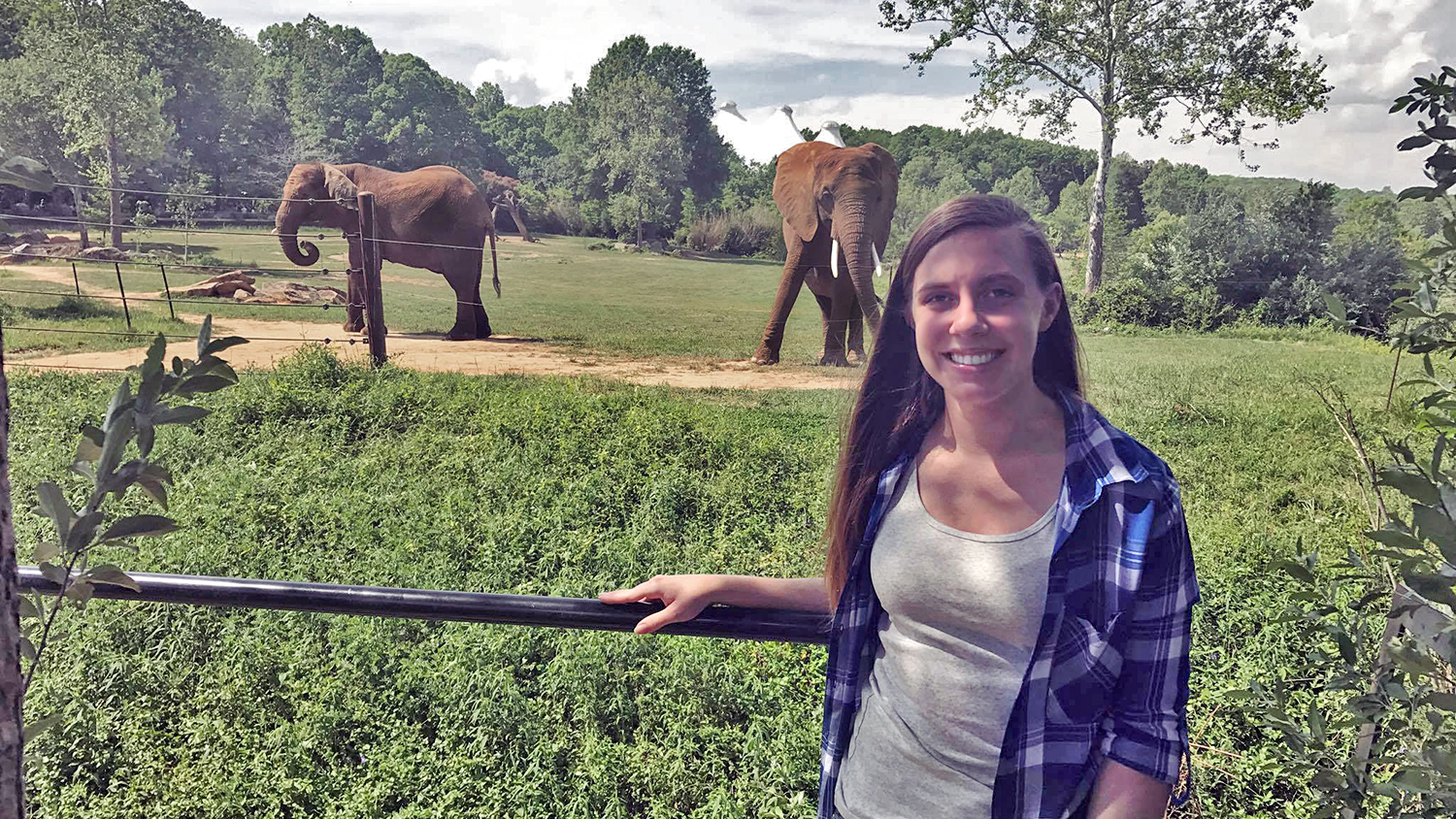What Should Elephants Eat?

Every six weeks, animal science graduate student Jordan Wood’s research requires a trip to the zoo.
The project: understand how tree species native to North Carolina could be used to supplement the diet of the North Carolina Zoo’s African elephants.
“Nutrition is like a big puzzle,” Wood said. “Each piece of the diet and each nutrient fits together with other pieces to create one diet that influences the well-being of the animal.”
In a nutshell, the project seeks to understand the current balance of pellets and “browse” (vegetation from the animal’s environment) in the elephants’ diet and tinker with possible improvements. The goal is to figure out a healthy way to increase the quantity of vegetation eaten by elephants following a decrease of specially formulated pellets, ensuring elephants are at a healthy weight without sacrificing nutrition.
As the project progresses, Wood and faculty advisor Kimberly Ange-van Heugten are also compiling nutrient profiles of commonly used browse species for use of zoos across the climate region — data that doesn’t currently exist.
“There are databases available for zoo diet formulations, but nutrient levels in browse can vary by region and by season,” Wood said. Many of these formulations use browse samples from Disney’s Animal Kingdom, for example – located in Orlando, Florida, a very different climate with very different vegetation than the North Carolina region.
By the end of the project, researchers will have compiled a database of regional browse species and nutrient profiles during all four seasons. This information could also prove valuable to zoos from South Carolina to Washington, D.C.
Wood presented a poster on the project at the Graduate Student Research Symposium at the McKimmon Center on March 22. She and Ange-van Heugten, in collaboration with zoo staff, hope to publish a paper with some of their findings in the fall. The results will be useful for enhancing the physical and mental health of elephants as well as other browse-consuming species in the region, like rhinos and giraffes.
Finding a Path Through Animal Science
This wasn’t always Wood’s path. As an animal science major at CALS, her original goal was veterinary school. Then her undergraduate experience taught her that she preferred teaching and research, and she found nutrition a fascinating way to continue helping animals.
Ange-van Heugten knew Wood’s passion for nutrition and interest in exotic animals, so when the North Carolina Zoo’s veterinarian Dr. Jb Minter and NC State adjunct faculty member and consulting nutritionist Dr. Liz Koutsos approached her about digging into the diet of the African elephant, she contacted Wood right away. Wood applied to the graduate program, and jumped right in as a graduate research assistant as soon as the acceptance letter hit her inbox.
Much of Wood’s day-to-day work in the laboratory is in front of a computer, examining diet formulations and nutrient analyses or finding existing research for her literature review. She enters sample collection data and monitors elephant weights.
And then there’s the fun part: visiting the elephants.
Every six weeks for the past year, Wood has driven to Asheboro to spend four days working with the elephant keepers and collecting feed samples. Wood weighs all the browse that is cut and fed to the six elephants and collects samples of each species the day it’s cut. These samples are then frozen to avoid extreme nutrient degradation. The next morning, she weighs the leftover browse to get an idea of how much the elephants eat.
Then it’s back to the lab for a week or two. This part of the process is meticulous: The samples must be weighed wet, then placed in a drying oven for at least 48 hours, weighed again, chopped into tiny pieces and finally run through a grinding mill. After that, she weighs them one last time and ships them to various labs for nutrient analysis.
She loves the work, Wood said, and credits Ange-van Heugten with helping her find her path.
“Getting into this kind of research was a little of what I knew, a lot of passion and by and far who I knew,” Wood said.
This post was originally published in College of Agriculture and Life Sciences News.


